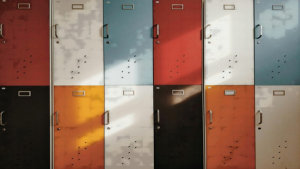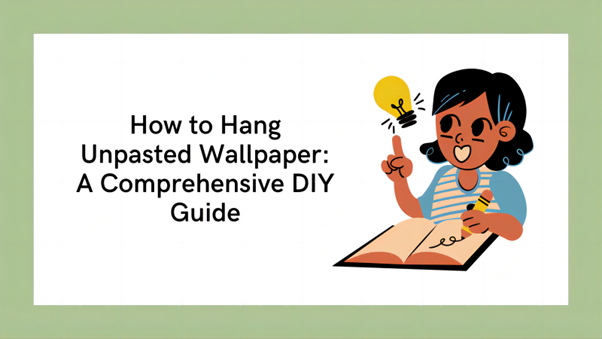Hanging unpasted wallpaper allows you to dramatically change the appearance of a room with personalized designs and patterns. While the process can be intricate, it is entirely manageable with the right tools and techniques. This guide provides detailed steps to help you hang unpasted wallpaper successfully, ensuring a smooth and professional finish.
Preparation: Laying the Groundwork
1. Wall Preparation:
Before you start, prepare your walls for the new wallpaper. This involves a thorough cleaning to remove dirt, oil, or any remnants of old wallpaper. Use a mild soap and water solution, and for tougher spots, a mixture of water and vinegar can be effective. Once clean, inspect the walls for imperfections. Fill any holes or cracks with spackle, then sand them down once dry to ensure a smooth surface. Priming your walls with a wallpaper primer can also help the adhesive bond more effectively.
2. Assembling Tools and Materials:
To hang unpasted wallpaper, you need specific tools:
- Wallpaper adhesive (paste)
- A paint roller or paste brush for applying the adhesive
- Smoothing tools like a brush or squeegee
- A sharp utility knife for trimming
- Measuring tape and a pencil
- A level or laser plumb for accurate alignment Gather these tools beforehand to streamline your workflow once you begin the project .
Measuring and Cutting: Accuracy is Key
1. Planning Your Approach:
Start by measuring the height and width of your walls to determine how much wallpaper you will need. Remember to allow for extra wallpaper on each strip for trimming and pattern matching, especially if your wallpaper has a large repeat pattern.
2. Cutting the Wallpaper:
Roll out your wallpaper on a large, flat surface and measure the length needed for each strip. Cut the strips one at a time, ensuring each piece is slightly longer than the wall height. This extra length will be important for alignment and trimming at the top and bottom of the wall.
Applying Adhesive: Ensuring Strong Adhesion
1. Choosing the Right Adhesive:
Select an adhesive that is suitable for your wallpaper type. Some adhesives are specific to certain materials like vinyl or fabric-backed wallpapers. Apply the adhesive evenly across the back of the wallpaper or directly to the wall if using the paste-the-wall technique. This method is particularly useful for beginners as it reduces the mess and complexity of handling wet wallpaper.
2. Hanging the First Piece:
The first strip is crucial as it sets the alignment for the subsequent pieces. Use your level or plumb line to draw a vertical line on the wall where the first strip will go. Align the top of the wallpaper with the ceiling, leaving a slight overhang that you will trim later. Smooth the wallpaper from the top down, and from the center outwards to prevent air bubbles.

Finishing Touches: Trimming and Cleaning
1. Trimming Excess Wallpaper:
Once each strip is applied and smoothed out, use a straight edge and a sharp utility knife to trim the excess wallpaper at the top and bottom. Do this while the wallpaper is still damp with adhesive to achieve clean, straight edges.
2. Cleaning and Sealing:
After trimming, wipe down the wallpaper with a damp sponge to remove any excess paste that may have squeezed out during application. This not only cleans the surface but also helps to seal the edges. Check the seams between strips to ensure they are tight and aligned without any gaps.
Tips for Success
- Take your time: Rushing the process can lead to misalignments and visible seams.
- Double-check measurements: Always measure twice before cutting.
- Keep tools clean: Clean your tools regularly during the process to prevent adhesive buildup.
For those interested in unique and customizable designs, print on demand wallpaper offers a vast selection of options that can be tailored to fit any decor style, providing a truly personalized interior design experience.
By following these detailed steps, you can successfully hang unpasted wallpaper, enhancing your living space with a fresh, new look.
FAQs
Does unpasted wallpaper need to be wet?
Yes, unpasted wallpaper requires a wet adhesive applied either to the wall or the paper itself before hanging. This ensures proper adhesion and a smooth finish.
How to hang an unpasted wallpaper border?
To hang an unpasted wallpaper border, apply a uniform layer of adhesive directly to the back of the border or onto the wall, then position it smoothly and press firmly to secure.
How long does it take to hang unpasted wallpaper?
Typically, hanging unpasted wallpaper on a standard-sized room takes about a day, factoring in wall preparation and drying time.
Can I hang unpasted wallpaper by myself, or do I need help?
Hanging unpasted wallpaper can be a solo task for small areas, but for larger rooms, having an extra set of hands can simplify alignment and application.

Recent Comments